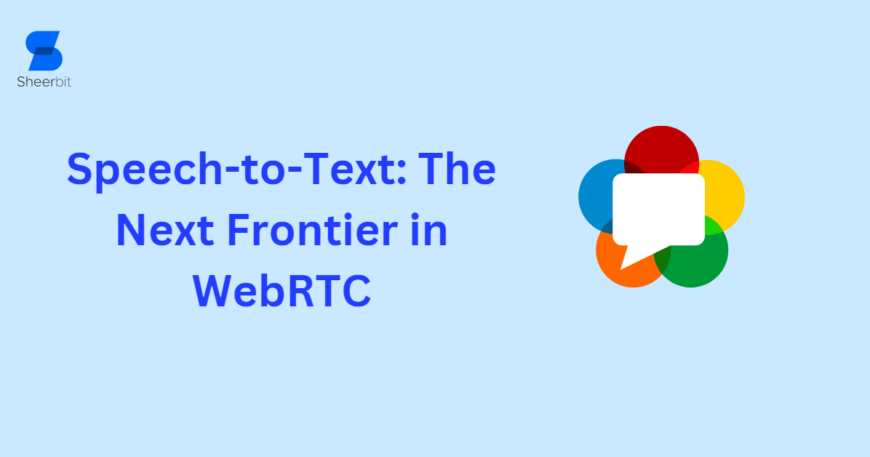Speech-to-text(STT) Using WebRTC can provide several benefits. WebRTC is a collection of APIs and protocols that enable real-time communication, such as audio and video streaming, directly within web browsers without requiring additional plugins or software installations. Integrating speech-to-text capabilities into WebRTC can enhance the communication experience and open up various possibilities.
Here are some benefits:
1. Accessibility:
Speech-to-text functionality can make web-based communication more inclusive for individuals with hearing impairments. By converting spoken words into text, it enables people who are deaf or hard of hearing to participate in real-time conversations, video conferences, or webinars. Speech-to-text functionality can make web applications more accessible to people with disabilities, such as those who are deaf or hard of hearing.
2. Transcription and Documentation:
By automatically transcribing spoken words into text, WebRTC with speech-to-text functionality can generate real-time transcripts of audio streams. This feature is valuable for capturing meeting minutes, creating searchable records, or providing live captioning during presentations or broadcasts.
3. Language Translation:
Incorporating STT Using WebRTC opens the door to real-time language translation. As the speech is transcribed into text, it becomes possible to apply machine translation algorithms to convert the text into another language, enabling multilingual communication in real-time.
4. Keyword Extraction and Analysis:
With speech-to-text functionality, WebRTC can extract keywords and perform analysis on the transcribed text. This can facilitate content categorization, sentiment analysis, or even trigger automated actions based on specific keywords mentioned during a conversation or presentation.
5. Content Indexing and Search:
By converting spoken words into text, WebRTC with speech-to-text functionality enables indexing and searchability of audio content. This makes it easier to navigate and retrieve specific segments or topics within recorded conversations or live streams.
6. Enhancing User Interfaces:
Speech-to-text capabilities in WebRTC can be leveraged to build voice-controlled interfaces or voice commands in web applications. Users can interact with the application by speaking commands, which are then transcribed and processed to trigger specific actions or navigate through the application’s features.
7. Real-time transcription:
Real-time audio transcription using speech-to-text technology is useful for several applications, including live captioning, video conferencing, and dictation.
8. Convenience:
Speech-to-text functionality can make it easier for people to interact with web applications, as they can simply speak their commands instead of typing them.
9. Improved accuracy:
Speech-to-text functionality is constantly being improved, and the accuracy of speech recognition is now very high. This means that users can be confident that the text transcription will be accurate.
10. Reduced costs:
Speech-to-text functionality can help to reduce the costs of transcription, as it eliminates the need to hire human transcribers.
These are just a few examples of the benefits of integrating speech-to-text functionality into WebRTC. The combination of real-time communication and transcription capabilities opens up new opportunities for accessibility, productivity, and innovation in various web-based applications and services.



